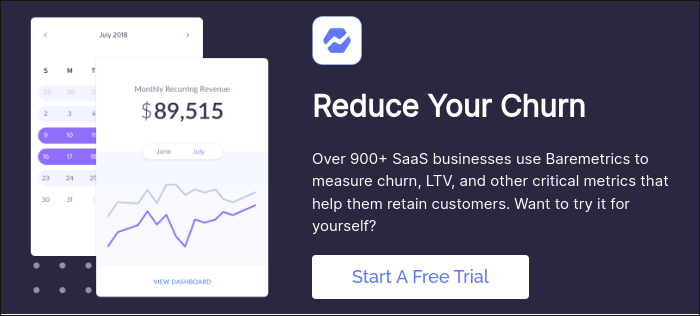Table of Contents

When you think of “growth,” what’s the first thing that comes to mind? Hacks, tricks, experiments, dark patterns?
I don’t blame you. Heck, we’ve even written about how growth hacking is manipulation. So yeah, we’re with you.
I’d like to introduce another way of thinking about growth: something we’ll call the Growth Matrix.
Copy/pasting hacks and tactics you see from others will likely fail you because they’re part of a larger strategy that doesn’t necessarily fit with your business. And you can’t copy/paste strategy. Strategy has to be custom-fit for your business and your team.
Besides that, most hacks and tactics are fads anyways — they work for a short-while until people catch on. And then they’re dead.
And contrary to what’s pushed in the tech echo chamber, growth is not just about acquisition and optimization.
How do you be more strategic about driving growth for your business?
There are two ways to think about what a business produces:
- Innovation: New projects that take a large amount of time and effort with large expected outcomes or potential results.
- Optimization: Incremental changes or improvements that have small and compounding outcomes or potential results.
And there are two groups of people that innovations and optimizations can be applied to:
- Potential Customers
- Current Customers
This gives us two spectrums to compare with each other:
- Innovate vs Optimize
- Acquire New Customers vs Monetize Existing Customers
In this article, we’ll explore how these two spectrums are combined to help you think more strategically and take a holistic approach to your growth strategy.
1. Innovating For New Customers
This strategy is founded on building new things for new customers, and distributing in new (and old) ways.
In the early days, this is the source of all growth for a business. The founders are shipping code, reaching out to their network, launching on Product Hunt, and hustling for every signup. You’re going from zero to one.
It’s also the main driver for sustainable growth over time. To keep growing, a business must keep innovating both in its product and in its distribution, which can take the form of new marketing channels, new features, new products, and new markets to attract these new customers.
A mistake many founders make is that they push hard for product and distribution innovations to make big leaps and strides until they “reach” product/market fit. Because things are working and it feels like they’ve figured out a winning combination, they stop innovating.
But this catches up to them later on when competitors’ products are now superior, marketing channels are saturated or disrupted, and all of a sudden, things aren’t working.
By taking your foot off the gas pedal, you can you lose precious momentum, which is hard to get back again.
So which features or products are you building to attract new customers? Which channels are you experimenting with? Which big new project are you giving team members autonomy to explore?
Tracking the efficacy of innovations for new customers is fairly straightforward:
- New traffic
- New leads
- New customers
2. Optimizing For New Customers
This strategy is founded on building incremental improvements for new customers in your product and marketing channels.
It’s also the most traditional perspective of growth in the startup-sphere.
Optimizing for new customers means figuring out how to turn more website visitors into leads, more leads into customers, and each step along the way.
What many entrepreneurs and growth teams don’t realize is that they may be relying on optimization too much.
Focusing entirely on optimization and then expecting a big result will leave you disappointed because, by nature, optimization is about getting small, incremental wins. It’s rare that an optimization will make a drastic improvement that will unlock growth for a business.
The more likely scenario is that an optimization compounds over time to make a material difference over a year. But it’s still likely not going to have as much impact as an innovation.
Nonetheless, don’t discount optimizations. They’re still very important, but not the key to creating big wins.
The purpose of an optimization is to improve the efficiency of an innovation.
So which parts of your funnel perform poorly? What hasn’t been touched in months or years? How many small improvements can you make?
Metrics to track for optimizing to acquire new customers:
- Traffic to lead conversion rate
- Lead to customer conversion rate
3. Innovating For Current Customers
This strategy is founded on building new things for current (or past) customers, and distributing in new (and old) ways.
This is where we start to get into uncharted territories.
Most founders are only ever focused on acquiring new customers and will do whatever it takes to get them. But what about your current customers?
Most know that it’s a lot harder to acquire a new customer than it is to retain an existing one, but did you know it’s much more effective to sell to current customers than it is to sell to a new customer?
Here are some pieces of evidence from Invesp to back up that claim:
- Acquiring a new customer is five times as expensive as retaining an existing customer.
- 44% of companies admit they, “have a greater focus” on acquisition, while 18% focus on retention (the rest claim to have an equal focus).
- The success rate of selling to a customer you already have is 60-70%, while the success rate of selling to a new customer is 5-20%
Innovating for your current customer base is a massively missed growth opportunity for most companies. You already have their trust, contact information, and credit card… you just need to figure out how to keep becoming more valuable for them.
A revised pricing model, add-on features, add-on products, integrations and partnerships, and new features can be huge growth levers for you.
Ignore upsells and expansions at your own peril.
Expansion revenue will help you:
- Combat increasing CAC and saturated channels: As acquisition channels continue to increase in cost, one way to fight this is by increasing your customer lifetime value. Your LTV/CAC will shrink as channels become more expensive, so upselling can increase your LTV and justify the cost to acquire each new customer.
- Offset (and overtake) churn: Does it kill you to look at your churned MRR? Expansion revenue can cancel out churned revenue and even overtake it completely to create “net negative churn,” when expansion revenue is greater than contraction and churned revenue.
- Prevent churn: Upsells and expansions also make your product more sticky. Each additional upgrade and used feature makes a customer more likely to stay since you’ve become both more valuable and more embedded in their workflow.
So how can you justify doubling your prices? What other complementary tools are your customers paying for? What’s your current potential for expansion revenue?
Here’s a good place to start to track how innovations for current customers are driving growth:
- Expansion revenue
- Reactivation revenue
- Customer acquisition cost
- User churn
- Net revenue churn
4. Optimizing For Current Customers
This strategy is founded on building incremental improvements for current customers.
It’s ideally fit for products with at least one of these characteristics:
- Large number of freemium users
- Referrals or word of mouth is one of the main acquisition channels
- Can be sold/upsold through an inside sales team to a large number of customers
Now, every company can optimize for current customers by investing in support, gathering more feedback from customers, and fixing bugs. But your creativity will be limited unless you have one or more of the three characteristics mentioned above.
Really what it comes down to is volume. To optimize for current customers, you need volume. Otherwise, it’s either going to either be impossible or take far too long to come to a conclusion.
Products with a large number of freemium users should focus on optimizing the upsell path from free to paid account.
For products with a strong referral system, word of mouth, or virality, optimizing the referral system can actually have a huge impact since it naturally compounds. Increasing your viral coefficient even a couple of decimal points compounds into substantial gains.
Inside sales teams stand to gain from an optimization to increase the number of customers they can upsell. Doubling the amount of responses they get from an outreach campaign could double the amount of deals closed. Doubling the conversion rate with a new selling method could also double revenue from closed deals.
So how can you get more free users to become paying users? How do you increase the effectiveness of your referral program? Is there a new method or channel for upselling customer customers?
Metrics to track:
- Viral coefficient
- Free-to-paid conversion rate
- Number of deals created
- Deal-to-close rate
Putting the Growth Matrix into practice
The next time you brainstorm new campaigns, experiments, or tests to drive growth, try to plot it in one of these four categories.
Or the next time you sit down to plan for the next quarter, figure out how you can diversify your growth strategy from just pure acquisition or optimization strategies.
Your next great growth lever might be from a place you don’t expect!




